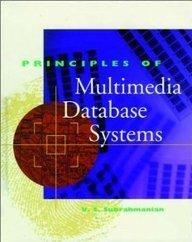Answer The 3 Questions Under the Study Case

tarted in the late 1990s, Google grew rapidly to become one of the leading companies in the world. Google's mission is "to organize the world's information and make it universally accessible and useful." It is operating on a simple but innovative business model of attracting Internet users to its free search services and carning revenue from targeted advertising. In the winner-takes-all business of Internet search, Google has captured considerably more market share than its next highest rival, Yahoo!. This has turned Google's Web pages into the Web's most valuable real (virtual) estate Through its two flagship programs, AdWords and AdSense, Google has capitalized on this leadership position to capture the lion's share in advertisement spending. AdWords enables businesses to place ads on Google and its network of publishing partners for as low as 2.5 cents per thousand impressions. On the other hand, it uses AdSense to push advertisements on publishing partners' Web sites targeting specific audience and share ad revenue with the publishing partner. This creates a win-win situation for both advertisers and publishers and developed Google into one giant sucking machine for ad revenue Even as a large company, Google continues to take risks and expand into new markets. It currently offers over 120 products or services. Sergey Brin and Larry Page, the founders, declared in Google's IPO prospectus, "We would fund projects that have a 10 percent chance of earning a billion dollars over the long term. Do not be surprised if we place smaller bets in areas that seem very speculative or even strange. As the ratio of reward to risk increases, we will accept projects further outside our normal areas, especially when the initial investment is small." Google promotes a culture of creativity and innovation in a number of ways. IT encourages innovation in all employees by allowing them to spend 20 percent of their time on a project of their own choosing. In addition, it offers benefits such as free meals, on- site gym, on-site dentist, and even washing machines at the company for busy employees. Despite open and free work culture, a rigid and procedure-filled structure is imposed for making timely decisions and executing plans. For example, when designing new features, the team and senior managers meet in a large conference room. They use the right side of the conference room walls to digitally project new features and the left side to project any transcribed critique with a timer clock giving everyone 10 minutes to layout ideas and finalize features. Thus, Google utilizes rigorous, data-driven procedures for evaluating new ideas in the midst of a chaotic innovation process. Google's vice president for search products and user experience Marissa Mayer, outlines nine notions of innovations embedded in the organizational culture, processes, and structure of Google (from Business week article, "Champions of Innovation") 1. Ideas come from everywhere: Google expects everyone to innovate, even the finance team










